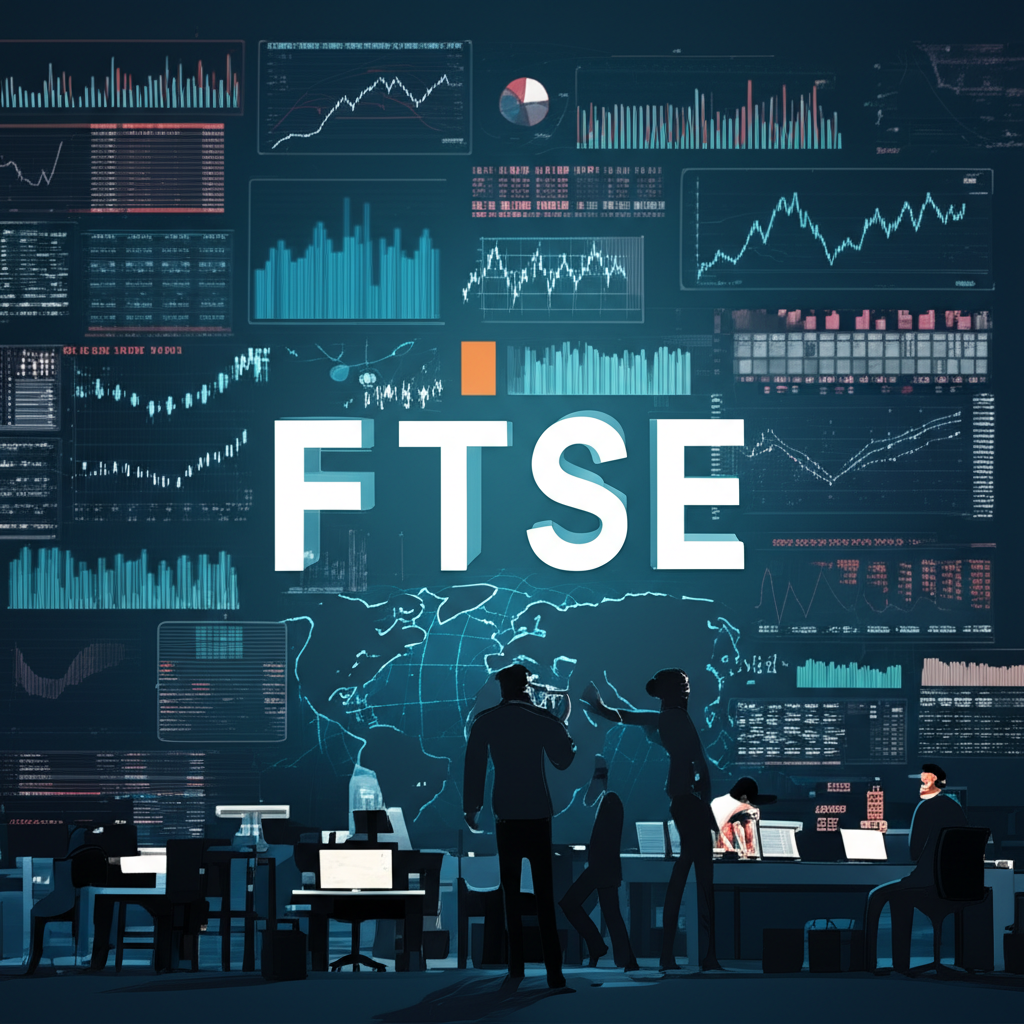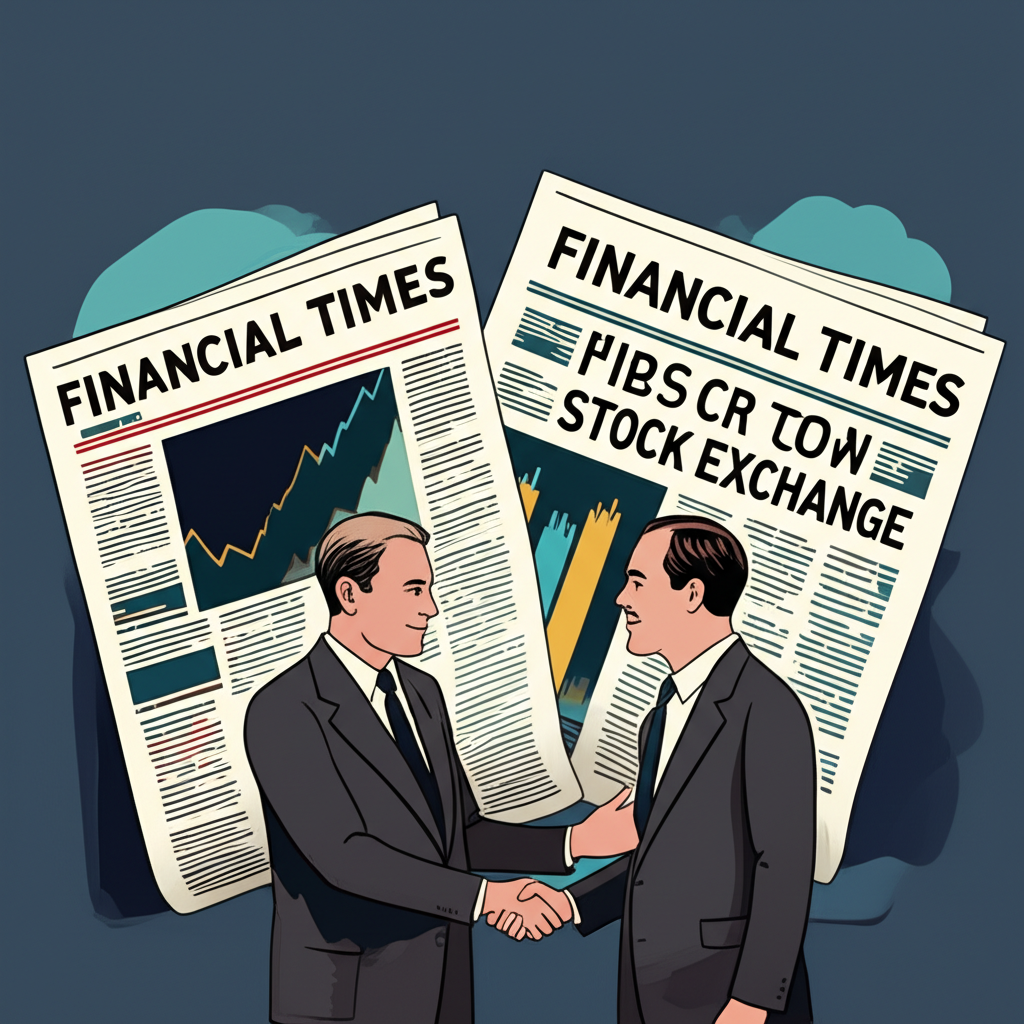Introduction: Decoding “FTSE”

In the complex world of international finance, certain acronyms carry immense weight—among them, “FTSE” stands as a central pillar of the United Kingdom’s financial identity. More than just a shorthand, FTSE represents a comprehensive system of indices that track the performance of companies listed on the London Stock Exchange and beyond. These benchmarks offer real-time insights into market trends, corporate health, and economic momentum, serving as essential tools for traders, fund managers, and policymakers. From its inception to its current global influence, the FTSE ecosystem has become synonymous with financial transparency and market integrity in the UK and across international investing circles. This article explores the full scope of FTSE—its origins, key indices, structural mechanics, and enduring relevance in modern finance.
What Does FTSE Stand For? The Origin Story

The term FTSE is derived from the **Financial Times Stock Exchange**, a name born from a strategic partnership established in 1984 between the Financial Times, one of the world’s most respected business publications, and the London Stock Exchange (LSE), an institution with roots stretching back to the 18th century. At the time, the UK lacked a standardized, transparent index to reflect the performance of its largest publicly traded companies. Existing benchmarks were limited in scope and methodology, failing to meet the growing demands of institutional investors and global markets.
The creation of the FTSE 100 filled this gap, introducing a modern, rules-based index that combined rigorous data standards with real-time accessibility. This innovation not only elevated the visibility of the UK market but also aligned it with other major financial centers like New York and Tokyo, which already had well-established indices. Over time, the FTSE brand expanded beyond a single index into a full-fledged global provider of market benchmarks, eventually evolving into the FTSE Russell Group following a strategic merger.
The FTSE 100 Index: UK’s Economic Barometer

Launched on January 3, 1984, with a starting value of 1,000 points, the **FTSE 100 Index** has become the most widely followed gauge of the UK stock market. It tracks the 100 companies listed on the London Stock Exchange with the highest market capitalization—those often referred to as “blue-chip” firms due to their size, stability, and long-term performance. Names like AstraZeneca, HSBC, BP, and Unilever frequently appear in the index, reflecting the depth and diversity of British corporate strength.
While often treated as a barometer of the UK economy, the FTSE 100 has a unique characteristic: many of its constituents generate the majority of their revenue overseas. As a result, the index can rise during periods of domestic economic weakness if global demand or foreign exchange movements favor UK multinationals. Conversely, a strong pound may dampen returns for export-heavy firms, even amid positive domestic conditions. This international exposure makes the FTSE 100 not just a mirror of the UK’s economy, but a lens into global market dynamics.
How the FTSE 100 is Calculated and Maintained

The FTSE 100 is constructed using a market capitalization-weighted methodology, meaning that the influence of each company on the index’s movement is proportional to its total market value—calculated by multiplying its share price by the number of shares available for public trading. However, not all shares are counted. The index applies a “free-float adjustment,” which excludes locked-in shares held by governments, founding families, or long-term institutional holders, ensuring that only tradable equity affects the index.
To maintain accuracy and relevance, the index is reviewed quarterly—in March, June, September, and December. During these reviews, companies are ranked by full market capitalization, and changes are made based on shifts in position, liquidity, and listing status. A company must be listed on the LSE’s main market, meet minimum free-float requirements, and demonstrate sufficient trading volume to qualify. These adjustments prevent stagnation and ensure the index continues to reflect the true leadership of the UK equity market. For those interested in the technical specifications, the London Stock Exchange Group provides detailed documentation on index construction and governance.
Key Characteristics of FTSE 100 Companies
Although rooted in the UK, the companies within the FTSE 100 are far from insular. Many operate on a global scale, with operations spanning continents and revenues denominated in multiple currencies. This international footprint means the index often behaves more like a global equity proxy than a pure reflection of domestic economic activity. For example, commodity price swings can significantly impact mining and energy firms like Rio Tinto or Shell, while pharmaceutical stocks such as GSK respond to regulatory changes and clinical trial results from the US and Europe.
Sector distribution also plays a critical role. Unlike some markets dominated by technology, the FTSE 100 has strong representation in financials, energy, healthcare, and consumer staples. This composition contributes to its reputation for stability and dividend yield, making it particularly attractive to income-focused investors. However, it also means the index may underperform during tech-driven bull markets. The blend of resilience, global reach, and income generation defines the FTSE 100’s unique investment profile.
Beyond the 100: Other Important FTSE Indices
While the FTSE 100 commands headlines, it represents only one piece of the broader UK equity landscape. The FTSE Russell framework includes a range of complementary indices designed to capture different market segments, offering investors more nuanced ways to analyze and participate in the UK economy.
FTSE 250 Index
The **FTSE 250 Index** includes the 250 companies ranked just below the FTSE 100 by market capitalization. Often regarded as the backbone of the UK’s domestic economy, these mid-cap firms typically derive a larger share of their revenue from within the UK compared to their blue-chip counterparts. Sectors such as construction, retail, and specialized services are well-represented, making the FTSE 250 a more sensitive indicator of local consumer sentiment and business conditions.
Historically, the FTSE 250 has delivered higher growth potential than the FTSE 100, though with increased volatility. Its constituents are often in expansion phases, pursuing mergers, entering new markets, or innovating within niche industries. Because of this dynamism, the FTSE 250 is closely watched by analysts seeking early signals of economic shifts within the UK.
FTSE All-Share Index
The **FTSE All-Share Index** combines the FTSE 100, FTSE 250, and FTSE SmallCap indices, representing approximately 98% to 99% of the total market capitalization of all UK-listed companies on the main market. As the most inclusive UK equity benchmark, it offers a panoramic view of the nation’s stock market performance. Institutional investors and index fund managers often use the FTSE All-Share as a reference point for measuring the overall health and trajectory of UK equities.
FTSE Global and Regional Indices
Beyond the UK, FTSE Russell has developed an extensive suite of global benchmarks. The **FTSE Global Equity Index Series (GEIS)** covers thousands of companies across developed and emerging markets, enabling investors to build diversified portfolios based on region, market cap, or investment style. Regional indices such as the FTSE Europe, FTSE Asia Pacific, and FTSE Emerging Markets allow for targeted exposure. These tools are foundational for asset allocation, risk modeling, and the creation of exchange-traded funds and other indexed products worldwide.
FTSE vs. Other Global Indices: A Comparative Look
Understanding the FTSE 100 requires context—particularly when compared to major indices in other financial markets. While no single index is a perfect counterpart, comparisons with the S&P 500 and the Dow Jones Industrial Average reveal important distinctions in structure, scope, and function.
| Feature | FTSE 100 | S&P 500 | Dow Jones Industrial Average (DJIA) |
| :———————- | :————————————- | :—————————————— | :————————————————– |
| **Geographical Focus** | Predominantly UK-listed companies | US-listed companies | US-listed companies |
| **Number of Constituents** | 100 | 500 | 30 |
| **Weighting Methodology** | Market capitalization-weighted | Market capitalization-weighted | Price-weighted (higher-priced stocks have more impact) |
| **Market Coverage** | Large-cap UK market benchmark | Broad large-cap US market benchmark | Narrower measure of 30 industrial giants |
| **Currency** | GBP (primarily) | USD (primarily) | USD (primarily) |
The **S&P 500** is often considered the closest equivalent to the FTSE 100 in terms of function, as both serve as primary indicators of large-cap equity performance in their respective countries. However, the S&P 500’s broader composition—500 companies versus 100—gives it greater diversification and reduces the risk of overexposure to any single firm. The **Dow Jones Industrial Average**, by contrast, uses a price-weighted method, meaning a $100 stock impacts the index more than a $50 stock, regardless of company size. This makes the Dow less representative of overall market value and more susceptible to distortion. The FTSE 100’s market-cap weighting ensures a more accurate reflection of corporate scale and investor exposure.
The FTSE Russell Group: A Global Index Provider
Today, the indices known collectively as “FTSE” are managed by **FTSE Russell**, a global leader in index design and financial analytics. Formed in 2014 through the merger of the original FTSE Group and Russell Investments’ index business, the organization operates as a subsidiary of the London Stock Exchange Group (LSEG). With offices around the world, FTSE Russell maintains over 300,000 indices across equities, fixed income, real estate, and alternative assets.
These benchmarks are not merely data points—they are the foundation of trillions of dollars in invested assets. Passive funds, ETFs, and structured products use FTSE Russell indices to replicate market performance, while active managers rely on them for performance evaluation. The group also develops specialized indices focused on ESG (Environmental, Social, and Governance) criteria, smart beta strategies, and sector-specific themes, reflecting the evolving priorities of modern investing. Further details on FTSE Russell’s global operations and index offerings are available for those seeking deeper insight.
Investing in and Trading the FTSE Indices
Access to the FTSE’s performance is no longer limited to those who can afford to buy shares in 100 different companies. A range of financial instruments now allows both retail and institutional investors to gain exposure efficiently and cost-effectively.
- Exchange-Traded Funds (ETFs): These funds trade on stock exchanges like individual shares and are designed to mirror the performance of a specific FTSE index. For example, an ETF tracking the FTSE 100 will hold a proportional basket of its constituent stocks. ETFs offer diversification, low fees, and intraday liquidity, making them popular among long-term investors and active traders alike.
- Mutual Funds: Similar in objective to ETFs, mutual funds that follow FTSE benchmarks pool investor capital to replicate index performance. They typically have higher fees and are priced once per day, making them better suited for buy-and-hold strategies.
- Derivatives: More advanced investors use futures, options, and Contracts for Difference (CFDs) to speculate on FTSE index movements without owning any underlying assets. These instruments offer leverage and short-selling capabilities but come with higher risk and are generally used for hedging or tactical positioning.
Understanding FTSE ETFs and Investment Products
A **FTSE ETF** is one of the most accessible ways for individuals to invest in the UK market. For instance, a Vanguard FTSE 100 ETF allows investors to gain exposure to the entire index with a single purchase, benefiting from low management fees and broad diversification. These funds are especially valuable for international investors seeking entry into the UK market without the complexity of selecting individual stocks.
FTSE ETFs are also used in portfolio construction to achieve specific strategic goals—such as increasing exposure to dividend-paying stocks or balancing a tech-heavy portfolio with more stable, income-generating assets. As passive investing continues to grow in popularity, FTSE-linked ETFs have become integral to modern wealth management.
Common Questions and Misconceptions About FTSE
Despite its prominence, the FTSE is often misunderstood. Clarifying common questions helps demystify its role and correct frequent misconceptions.
What Does “Footsie” Mean in Slang?
“Footsie” is the affectionate, informal name for the **FTSE 100 Index**. Widely used in financial media, trading floors, and everyday conversation, the term adds a touch of familiarity to what is otherwise a formal benchmark. While “FTSE” refers to the entire family of indices, “Footsie” almost always points specifically to the FTSE 100.
What is the US Equivalent of the FTSE?
There is no exact equivalent, but the **S&P 500** is generally seen as the closest counterpart. Both are market-cap-weighted, serve as primary national benchmarks, and are widely used in investment products. The key differences lie in size—the S&P 500 covers more companies—and sector composition, with the US index having a heavier tilt toward technology.
What is the full form of FTSE?
FTSE stands for **Financial Times Stock Exchange**.
What is the primary purpose of the FTSE 100 index?
The primary purpose of the FTSE 100 index is to serve as the benchmark for the UK stock market, reflecting the performance of the 100 largest UK-listed companies by market capitalization and acting as a key indicator of the UK’s economic health.
How is “Footsie” related to FTSE?
“Footsie” is the popular, informal nickname for the **FTSE 100 Index**. It is commonly used in media and general conversation to refer specifically to this benchmark index.
What is the difference between the FTSE 100 and FTSE 250?
The FTSE 100 tracks the 100 largest UK-listed companies by market capitalization, while the FTSE 250 tracks the next 250 largest companies. The FTSE 100 generally includes more globally oriented “blue-chip” firms, whereas the FTSE 250 is often seen as a better indicator of the domestic UK economy.
Is FTSE only relevant to the UK stock market?
While the most famous FTSE indices (FTSE 100, 250, All-Share) are focused on the UK market, the broader FTSE Russell Group provides thousands of global and regional indices, making FTSE relevant to international markets as well.
What does “FTSE ETF” mean, and how can I invest in it?
A “FTSE ETF” is an Exchange-Traded Fund that aims to track the performance of a specific FTSE index, such as the FTSE 100. You can invest in FTSE ETFs through a brokerage account, buying and selling them on a stock exchange like regular shares.
How does the FTSE compare to the S&P 500?
Both are market-capitalization-weighted benchmark indices for their respective countries’ large-cap equities. However, the FTSE 100 tracks 100 UK-listed companies, many with global revenues, while the S&P 500 tracks 500 large US-listed companies. The S&P 500 is a broader measure of the US market.
Which companies are typically included in the FTSE 100?
The FTSE 100 typically includes the UK’s largest and most established companies across various sectors, such as major banks, energy companies, pharmaceutical giants, consumer goods manufacturers, and telecommunication firms, all ranked by market capitalization.
Who manages and oversees the FTSE indices?
The FTSE indices are managed and overseen by the FTSE Russell Group, which is a global index provider and a subsidiary of the London Stock Exchange Group (LSEG).
What factors commonly influence the performance of the FTSE 100?
The FTSE 100’s performance is influenced by a range of factors, including:
- Global economic conditions and growth forecasts
- UK economic data (GDP, inflation, interest rates)
- Company earnings and corporate news
- Geopolitical events and political stability
- Currency fluctuations (especially for companies with significant international earnings)
- Commodity prices (due to the presence of large energy and mining companies)
Conclusion: The Enduring Relevance of FTSE
What began as a collaboration between a leading financial newspaper and a historic stock exchange has evolved into a global benchmarking powerhouse. The FTSE 100, affectionately known as “Footsie,” remains a vital indicator of market sentiment and corporate performance in the UK. Yet its significance extends far beyond national borders—through the expansive reach of FTSE Russell, the brand now underpins investment decisions across continents.
With robust methodologies, transparent governance, and continuous adaptation to market changes, FTSE indices have maintained their credibility and utility. Whether used to track blue-chip performance, guide ESG investing, or power multi-billion-dollar ETFs, the FTSE framework continues to shape the way investors understand and interact with financial markets. As global finance grows more interconnected, the role of clear, reliable benchmarks like FTSE becomes not just relevant—but essential.

留言